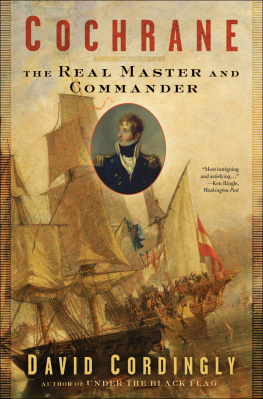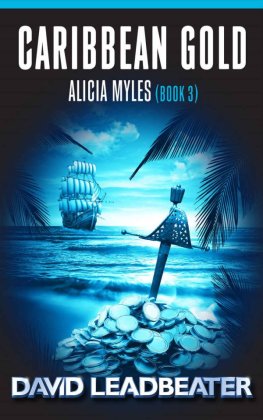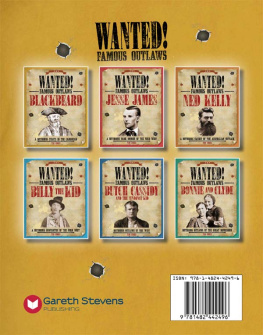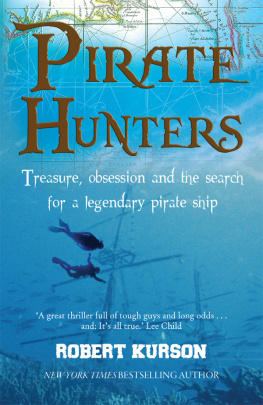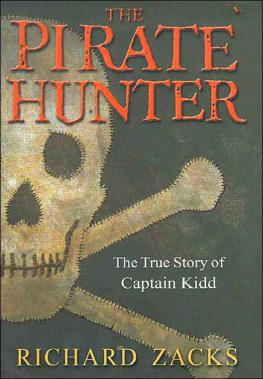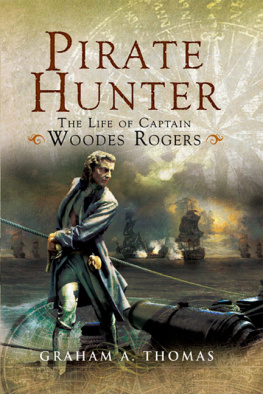David Cordingly - Pirate Hunter of the Caribbean: The Adventurous Life of Captain Woodes Rogers
Here you can read online David Cordingly - Pirate Hunter of the Caribbean: The Adventurous Life of Captain Woodes Rogers full text of the book (entire story) in english for free. Download pdf and epub, get meaning, cover and reviews about this ebook. year: 2011, publisher: Random House, genre: Adventure. Description of the work, (preface) as well as reviews are available. Best literature library LitArk.com created for fans of good reading and offers a wide selection of genres:
Romance novel
Science fiction
Adventure
Detective
Science
History
Home and family
Prose
Art
Politics
Computer
Non-fiction
Religion
Business
Children
Humor
Choose a favorite category and find really read worthwhile books. Enjoy immersion in the world of imagination, feel the emotions of the characters or learn something new for yourself, make an fascinating discovery.

- Book:Pirate Hunter of the Caribbean: The Adventurous Life of Captain Woodes Rogers
- Author:
- Publisher:Random House
- Genre:
- Year:2011
- Rating:4 / 5
- Favourites:Add to favourites
- Your mark:
- 80
- 1
- 2
- 3
- 4
- 5
Pirate Hunter of the Caribbean: The Adventurous Life of Captain Woodes Rogers: summary, description and annotation
We offer to read an annotation, description, summary or preface (depends on what the author of the book "Pirate Hunter of the Caribbean: The Adventurous Life of Captain Woodes Rogers" wrote himself). If you haven't found the necessary information about the book — write in the comments, we will try to find it.
Pirate Hunter of the Caribbean: The Adventurous Life of Captain Woodes Rogers — read online for free the complete book (whole text) full work
Below is the text of the book, divided by pages. System saving the place of the last page read, allows you to conveniently read the book "Pirate Hunter of the Caribbean: The Adventurous Life of Captain Woodes Rogers" online for free, without having to search again every time where you left off. Put a bookmark, and you can go to the page where you finished reading at any time.
Font size:
Interval:
Bookmark:
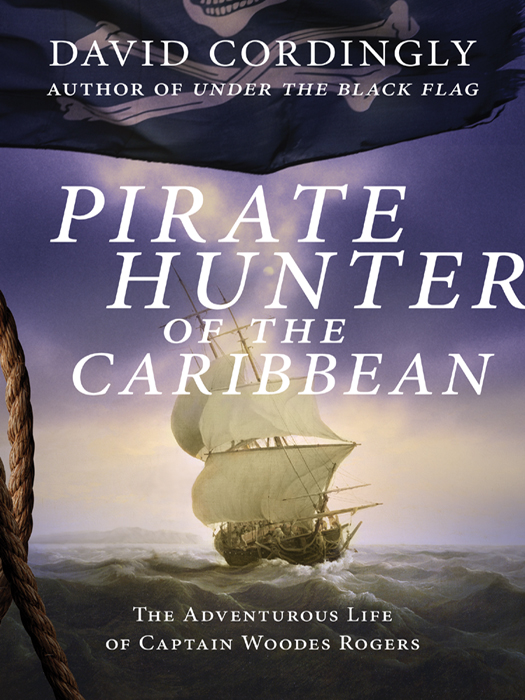
ALSO BY DAVID CORDINGLY
Cochrane: The Real Master and Commander
Under the Black Flag:
The Romance and Reality of Life Among the Pirates
Seafaring Women: Adventures of Pirate Queens,
Female Stowaways, and Sailors Wives
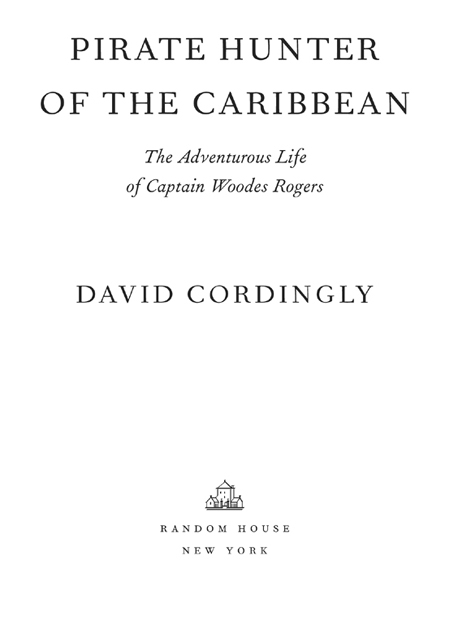
Copyright 2011 by David Cordingly
All rights reserved.
Published in the United States by Random House, an imprint of The Random House Publishing Group, a division of Random House, Inc., New York.
R ANDOM H OUSE and colophon are registered trademarks of Random House, Inc.
Originally published in the United Kingdom as Spanish Gold by Bloomsbury Publishing, London.
Maps by John Gilkes
Illustrative material within the text is reproduced by permission of the British Library.
eISBN: 978-0-679-64421-7
www.atrandom.com
Jacket design: Base Art Co.
Jacket painting: Charles Brooking, Shipping in the English Channel (detail) (Yale Center for British Art, Paul Mellon Collection/Bridgeman Art Library
v3.1
For Shirley
The Juan Fernndez Archipelago consists of three islands and a rocky islet. The largest island, which used to be known as Isla Ms a Tierra, is the only one which has ever been inhabited and is the one which the buccaneers and later seafarers called Juan Fernndez. In 1966 the Chilean government renamed this island Isla Robinson Crusoe, and the smaller, uninhabited island 112 miles to the west (formerly called Isla Ms Afuera) was renamed Isla Alejandro Selkirk. The third island in the group was, and still is, called Isla Santa Clara, and the rocky islet is called Islote Juananga. I have followed the usage of the early seafarers and always refer to the large island by its original name, as in this quote from Woodes Rogers journal, At seven this morning we made the Island of Juan Fernandez.
During the course of this book I have used the terms pieces of eight, pesos and Spanish dollars depending on the source of the information. All three terms apply to the same silver coin which was worth eight reales and was the common currency used throughout Spains empire in the New World for more than three centuries. One side of the coin had the Spanish coat of arms and the other side usually had a design which included the pillars of Hercules. The twin pillars symbolised the limits of the ancient world at the Straits of Gibraltar and these eventually formed the basis of the dollar sign used today. In 1644 one piece of eight (or peso or Spanish dollar) was valued in England at four shillings and sixpence. That would be the equivalent of about 18 or US $28 today.
In their books, Woodes Rogers and Edward Cooke usually anglicised the names of the Spanish ships which they encountered. I have used the Spanish names for Spanish ships and smaller vessels. However, I have retained the archaic spelling of Dutchess and Marquiss for the English ships because these are the names given to them by the privateers.
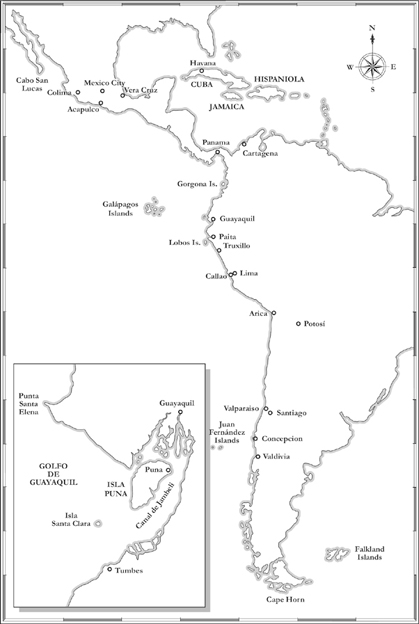
Map of the Pacific coast of South and Central America showing the places associated with the buccaneers and with Woodes Rogers privateering expedition.

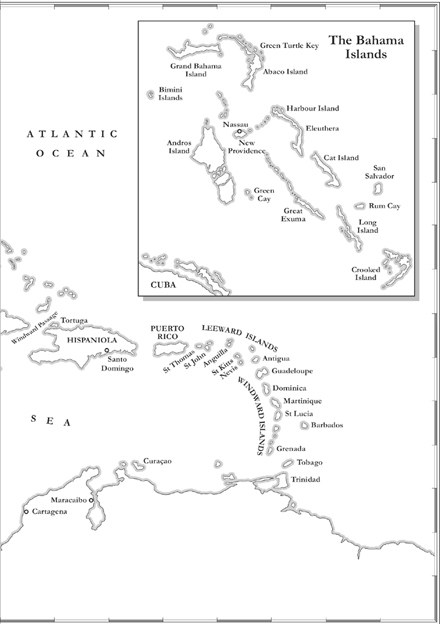
Map of the Caribbean and Central America during the time of the buccaneers, privateers and pirates of the seventeenth and early eighteenth century.
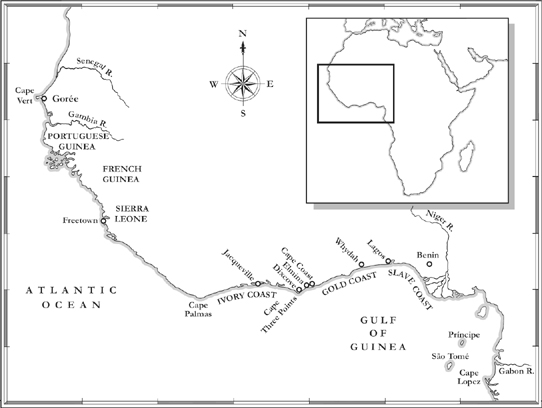
Map of the coast of West Africa showing the harbours and trading posts visited by the pirates of Bartholomew Roberts and naval ships sent to hunt them down.
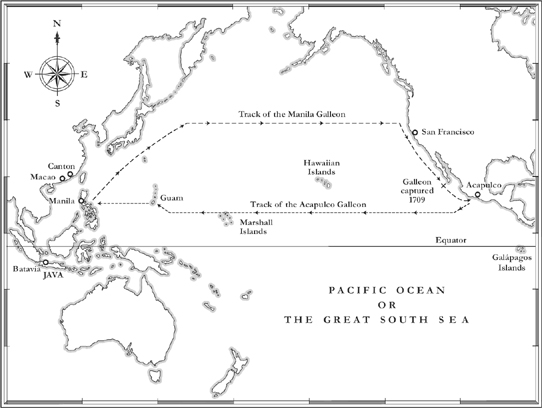
Map of the Pacific to show the tracks of the eastbound Manila Galleon and the westbound Acapulco Galleon.
In the autumn of 1717 the following item appeared in a London newspaper: On Wednesday Capt Rogers, who took the Aquapulca Ship in the South-Seas, kissed his Majestys hand at Hampton Court, on his being made Governor of the Island of Providence in the West Indies, now in the possession of the Pirates.
Behind this brief statement lies an extraordinary story. It is the story of a tough and resolute sea captain who led a privateering raid on Spanish ships in the Pacific, rescued a castaway from a deserted island and then played a key role in the fight against the pirates of the Caribbean. It is also a tale of treasure ships and treasure ports, of maroonings and hangings, and the genesis of Daniel Defoes most famous book, The Life and Strange Surprising Adventures of Robinson Crusoe. The story is played out against the background of fierce colonial rivalry between Britain, France and Spain; and it is linked with the fabulously rich trade in gold and silver from Central and South America, the trade in silks and spices from the Far East and the shipment of black slaves from the west coast of Africa to the sugar plantations of the West Indies. Many of the events centre on two groups of islands: the Bahamas and the remote archipelago of Juan Fernndez in the South Pacific.
For several years the harbour of Nassau in the Bahamas was the base for a roving band of pirates which included many of the leading figures of the so-called Golden Age of Piracy figures such as Ben Hornigold, Charles Vane, Calico Jack, Sam Bellamy and Edward Teach, otherwise known as Blackbeard. This nucleus of loose and disorderly people produced a generation of pirates whose operations extended from the Caribbean to the east coast of North America as far as Newfoundland, and across the Atlantic to the slave ports of West Africa and beyond to the Indian Ocean. The usual explanation given for this explosion of piracy is the signing of the Treaty of Utrecht in 1713, which brought an end to eleven years of war and caused Britain, France and other maritime powers to reduce the size of their navies. This threw thousands of redundant sailors on to the streets of coastal towns and cities. Unable to find work elsewhere, some of these seamen turned to piracy. They were joined by the crews of privateer ships who had been legally authorised by letters of marque to attack enemy shipping when their country was at war but, with the declaration of peace, were tempted to exchange their national ensigns for the black flag of piracy.
Redundant sailors and privateers were certainly among the crews of the pirate ships but there were other events which sparked off the alarming surge in piracy following the Treaty of Utrecht. The first was the wrecking of a Spanish treasure fleet on the coast of Florida in 1715. This attracted sailors and adventurers from across the Caribbean to go fishing on the wrecks for Spanish gold and silver. The second was the misguided action of the Spanish in expelling the logwood cutters from the Bay of Campeche in the Gulf of Mexico and the Bay of Honduras. Described by one observer as a rude, drunken crew, some of which have been pirates, and most of them sailors,heavy drinking. When the Spanish seized the ships involved in the logwood trade, the cutters migrated to Nassau, which was already being used by the treasure hunters as a base for their operations. The sheltered harbour on the north coast of the island of New Providence in the Bahamas became a magnet for a motley group of seafaring men who found piracy to be an easier and more profitable occupation than life on a merchant ship or cutting logs in the steamy jungles of Central America.
Font size:
Interval:
Bookmark:
Similar books «Pirate Hunter of the Caribbean: The Adventurous Life of Captain Woodes Rogers»
Look at similar books to Pirate Hunter of the Caribbean: The Adventurous Life of Captain Woodes Rogers. We have selected literature similar in name and meaning in the hope of providing readers with more options to find new, interesting, not yet read works.
Discussion, reviews of the book Pirate Hunter of the Caribbean: The Adventurous Life of Captain Woodes Rogers and just readers' own opinions. Leave your comments, write what you think about the work, its meaning or the main characters. Specify what exactly you liked and what you didn't like, and why you think so.

